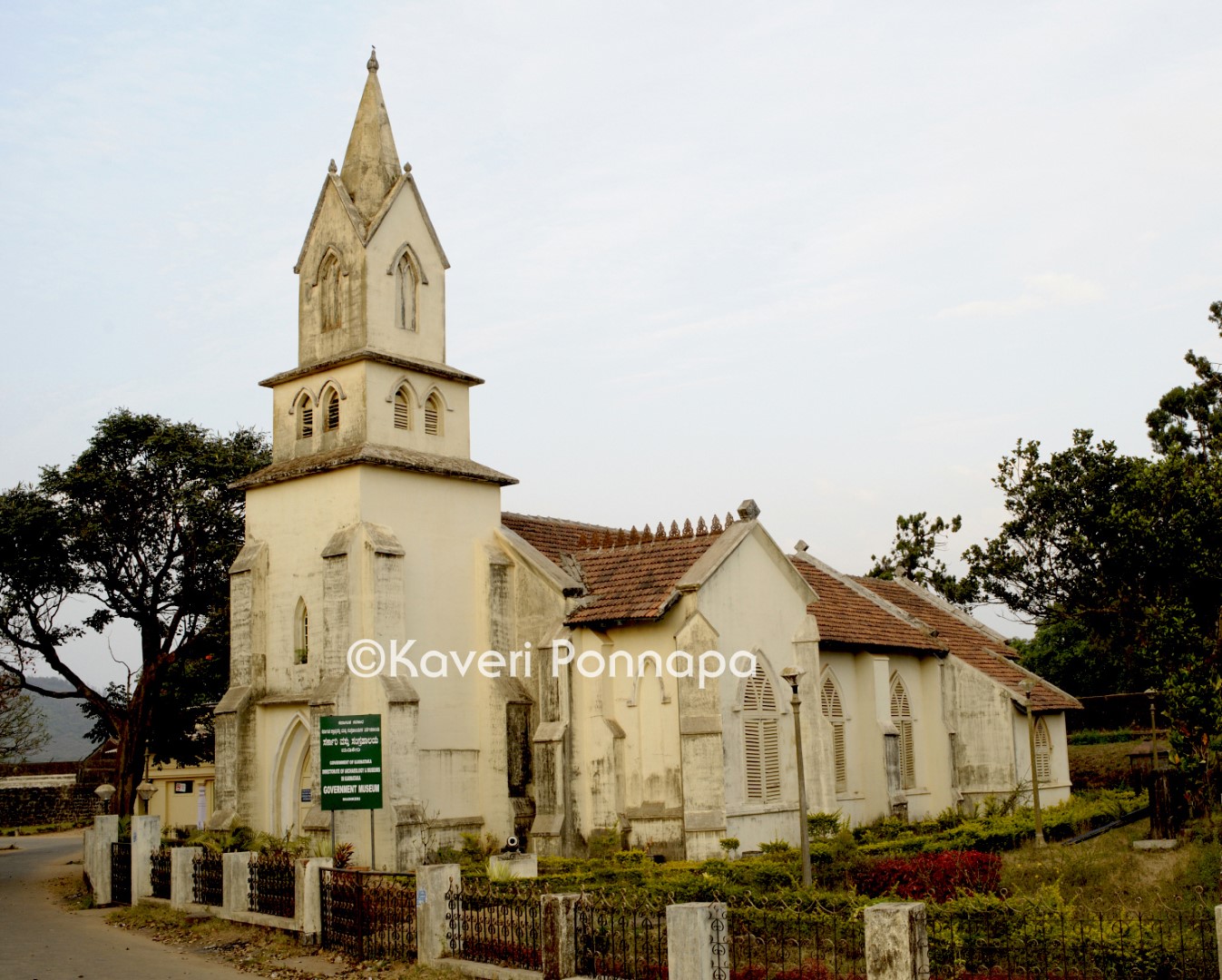
The forcible annexation of Kodagu by the British in 1834 CE created a community of Europeans that grew from the officers of the Madras Regiment and civil officials to include the increasing number of planters who came to make their fortunes in coffee in the district. Church records noted the attendance of 90 persons at church service in 1850 CE, with service being held in the Regimental Mess House and the Chaplin of Mangalore travelling up to conduct the service. As the demand for a church grew, a site was selected within the area of the Fort where the present church stands. This was the site of a Veerabhadra temple. Official records indicate the temple was in ruins, and it was these ruins that were demolished to make way for the church. However, local oral history states that the temple was demolished and the deity, Veerabhadra, was reinstated at the forest shrine of Mythilappa, north of Madikeri. In 1853 CE, the Government sanctioned the demolition of the temple as well as the quarters occupied by the Sargent -Major of the 4 th Regiment of the Madras Native Infantry and work commenced on the church. The totals cost of the church, Rs. 9,650, was raised through a Government grant, local subscriptions, the Madras Church Building Society and Society for Promoting Christian Knowledge, London. The work was initiated by the Rev.R.Ponsett and completed by the Rev.A.Fennell.
St. Mark’s Church was consecrated on April 29 th , 1859 by Bishop Dealtry, Bishop of Madras. As the European community in the district grew larger, The Church in Madras: Being the History of the Ecclesiastical and Missionary Action of the East Indian Company in the Presidency of Madras in the Seventeenth and Eighteenth Centuries (1904) notes that St. Mark’s Church was sometimes too small for the congregation. The beautiful stained glass window of the Good Shepherd was put up in 1897 CE, in memory of the Rev.A.Fennell, and is still intact. The church houses a Museum run by the State Archaeology Department. The small collection includes sculptures, coins and artefacts excavated in the district. Of real importance is a brocade kupya (Kodava man’s dress) which belonged to Biddanda Bopu, the respected Commander-in Chief of the Kodava army under the reign of Dodda Vira Rajendra. A small niche is dedicated to the awards received by Field Marshall K.M. Cariappa, the first Commander-in-Chief of the Indian Army in Independent India, which have been donated to the Museum. Of interest are numerous kolluvo kall or bira kall (hero stones), commemorating various heroic deeds and individuals who died heroic deaths in battle, collected from across Kodagu.

